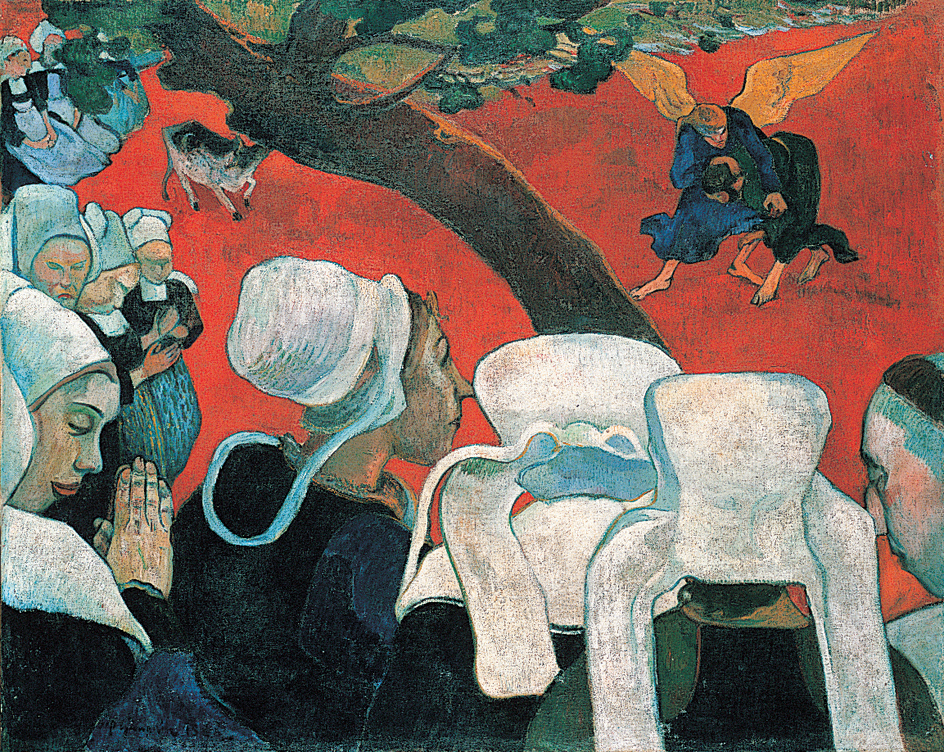Gauguin, << goh GAN, >> Paul (1848-1903), was a French artist. Gauguin developed an original, personal, decorative style of painting. In his best-known works, he emphasized simplified forms and flat planes enclosed by rhythmic lines. He painted with pure, brilliant colors that strongly influenced the Fauves and the Expressionists of the early 1900’s.
Early career.
Eugene Henri Paul Gauguin was born in Paris on June 7, 1848. From 1865 to 1871, he served as a seaman in the merchant marine and in the French Navy. He then became a stockbroker in Paris, a position he held until he resigned in 1883 to devote himself to painting. Gauguin studied first with Impressionist artist Camille Pissarro. He also experimented with the pointillist technique developed by the painters Georges Seurat and Paul Signac (see Seurat, Georges ).
Between 1886 and 1890, Gauguin made several visits to Brittany in northwestern France. By 1889, he led a group of artists called the Pont-Aven school, named for the Breton village where they first lived. The painters admired the local people for their simple lives and deep, almost superstitious faith. Such qualities, the artists felt, served as a contrast to the sophistication of Paris and helped them move beyond surface appearances to a truth about humanity’s basic nature.
During his Pont-Aven period, Gauguin was one of the artists who formulated the philosophy of art called Synthetism. Synthetism stressed flat planes and intense colors. Gauguin developed this style fully in The Yellow Christ (1889), showing three Breton women kneeling to contemplate the Crucifixion. So powerful is their faith that they experience a vision of Christ on the cross. The painting is characteristic of the Pont-Aven school in the simplicity of form, the blue outline around the figure of Jesus, and the apparently arbitrary use of primary colors in the landscape. Another one of Gauguin’s Pont-Aven paintings is The Vision After the Sermon.

Gauguin in Tahiti.
A trip to Martinique in 1887 sparked a longing in Gauguin for the tropics. In 1891, the French government gave him a grant to observe and paint Tahitian customs. He returned to Paris two years later but moved back to the South Pacific permanently in 1895. He lived in Tahiti and then in the Marquesas Islands, where he died on May 8, 1903.
Gauguin perceived Tahiti as a land of bright, warm colors and strong, beautiful people, unspoiled by Western civilization. His paintings from this period celebrate that beauty. But Gauguin also injected into his paintings his feelings about art and religion. His painting Where Do We Come From? What Are We? Where Are We Going? (1897) shows the human life cycle from infancy to old age. The landscape represents the fertility of nature. In the background, an idol symbolizes the presence of a world beyond the earthly one.
Gauguin also created wood sculptures, ceramics, and prints. He described his early experience in Tahiti in the book Noa Noa (1897). A selection from his journals was published in 1918 after his death as Avant et Apres (translated as Intimate Journals).
See also Impressionism ; Postimpressionism. ; Van Gogh, Vincent .
